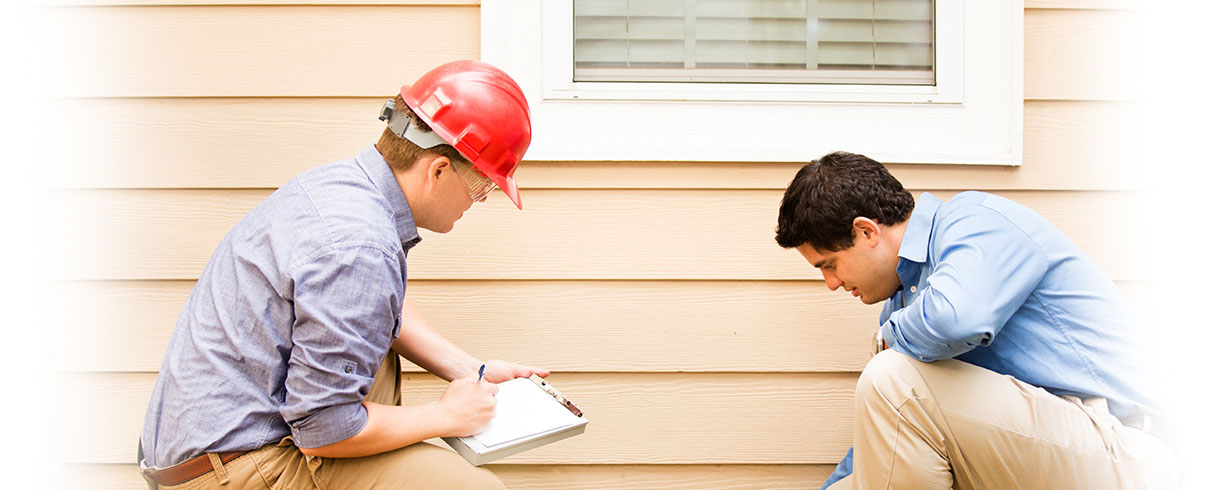Now that the weather is finally warming up, it's a good time to give your home a check-up. From cleaning the gutters to checking the foundations and setting up the air conditioning, make sure you don't miss a thing with our spring home maintenance checklist.
Now that the weather is finally warming up, it's a good time to give your home a check-up. From cleaning the gutters to checking the foundations and setting up the air conditioning, make sure you don't miss a thing with our spring home maintenance checklist.
The best way to avoid having to make an insurance claim is by identifying potential trouble spots before any damage occurs. Armed with a notepad, pencil and camera, take notes and photos to help you plan the repairs that need to be done over the coming weeks.
If you use your tablet or cellphone to do the inspection, you can also use the electronic checklist at the end of this article.
Spring has sprung, so let's start outdoors
1. Gutters and downspouts
Are the gutters and downspouts still firmly attached?
Is water draining away from the house and its foundations?
Are the gutters and downspouts free of debris?
To avoid water getting in through the roof, walls or foundations, pay special attention to your gutters and downspouts. Read our article to learn more about gutter maintenance.
2. The roof
Is the roof covering intact?
Are there any raised shingles? Is the roofing sheet damaged?
Are the seals around the chimney, flashing and skylights in good condition?
Avoid climbing up on the roof if possible. Instead, use binoculars to do the inspection. Look closely at every corner of the roof. If it is impossible to see everything from the ground and you need to use a ladder, be sure to take every precaution, and ask someone to help you.
Take a look at our detailed list of things to look for when inspecting your roof.
3. Foundations
Are there any damp areas?
Can you see any cracks? Do the cracks extend into the ground?
Even the smallest crack can mean water infiltration. Water damage is the most common home insurance claim. If your foundations are showing signs of damage, don't hesitate to call in a professional for advice.
Did you know that insurance policies don't automatically cover damage caused by water infiltrating the foundations? We can help you to select your coverage against water damage.
4. Exterior wall cladding
Does the cladding seem loose, cracked, broken or discoloured?
If you have brick or stone cladding, is it crumbling? Are there any cracks or openings in the pointing?
Damaged cladding can allow water to enter your home. Contact a professional if you discover a major problem.
5. Staircases and balconies
If your staircases, balconies, handrails or railings are made of wood, look for signs of mould, moss and fungus.
If they are metal, is there any rust?
If they are concrete, are there any cracks? Is the concrete crumbling?
Are the steps stable and level?
Are the handrails and railings securely attached?
This is a question of safety, both yours and your visitors'. To avoid injury and possible civil liability, it is important that the entrance to your property is safe.
Finally, don't forget to inspect the rest of your yard, including fences, sheds and landscaping elements. While damage to these things may be less likely to cause a serious problem, that's no reason to neglect their maintenance.
Prepare for the flowers that will soon be blooming in your yard, trim the bushes, pick up any garbage, and remove all traces of winter.
Inside the home
6. Check the pipes
Although there's no direct connection with spring, you should check the pipes on your appliances at least once a year. This includes the hoses on your washing machine and dishwasher, as well as any other rubber tubes that water runs through (e.g., your coffee machine, refrigerator or water cooler).
These hoses can become damaged or worn. If you find any cracks or signs of damage, it's time to replace the hose. Hot water hoses are more prone to damage and should be replaced every two to three years. Although reinforced hoses can last up to ten years, remember that they won't last forever!
7. Check the ventilation system
If your house has one, check the air exchanger. While you're at it, check the range hood in your kitchen, the fan in your bathroom, and, above all, your air conditioner.
In a few weeks' time, you'll be thinking about switching the air conditioning on. Clean the filters, removing any dust, or replace them following the manufacturer's instructions. This will have a big impact on air quality in your home.
8. Doors and windows
Start getting your doors and windows ready for summer. Install the insect screens, check the seals and examine the frames to make sure they are still in good condition. Pay particular attention to old wooden frames. Don't forget to oil your door hinges to keep them squeak-free all summer.
Remember that you don't have to repair everything in one day. Slow and steady wins the race!
Our electronic checklist
Outside
Inside

























